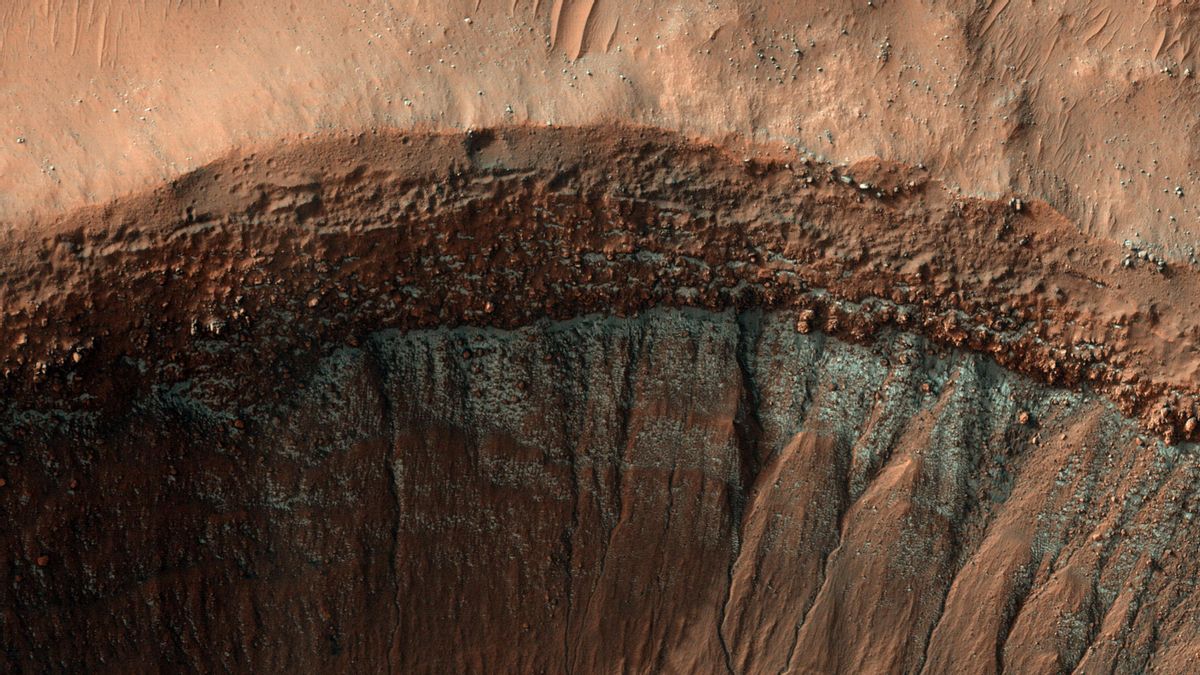JAKARTA - The planet Mars has a million surprises for anyone who can find it, including recently discovered by a NASA satellite that saw dry ice and trenches in the planet's craters.
The find lies more than 100 miles above the surface of a Martian crater. The temperature here will increase even more during the planet's winter.
With NASA's rover robots competing with temperatures of -140 degrees Fahrenheit, even though the poles are colder, carbon dioxide in the atmosphere condenses into dry ice.
Seen in images shared by NASA, CO2 ice in winter is found closer to the equator, where it is usually a bit too warm for dry ice to exist.
Cold as (dry) ice: Mars Reconnaissance Orbiter glimpsed patches of carbon dioxide frost in the shadows beneath a crater rim. Details: https://t.co/hu3vXdTnow pic.twitter.com/65fDsGnu9c
— NASA Mars (@NASAMars) April 5, 2022
But in parts of the crater that receive less sunlight, of course, ice is easy to form. Not only that, the satellite also presents another strange sight on Mars, namely the trench.
Launching Mashable, Monday, April 11, it is a channel or trench that is cut into the surface. CO2 frosts that are fluid-like and flow, or form gutters.
It is known that Mars actually contains water ice. In the planet's frigid Korolev crater, ice overflows within the deep basin all year round.
Planetary scientists have found evidence that water once flowed on Mars, perhaps as little as 2 billion years ago. And perhaps about 4 billion years ago, Mars was even a mostly blue world, with enough water to cover most of the planet.
Now the entire surface of the planet is a hard and dusty desert. NASA's rover robot is now stalking the arid world for signs of primitive past life.
The English, Chinese, Japanese, Arabic, and French versions are automatically generated by the AI. So there may still be inaccuracies in translating, please always see Indonesian as our main language. (system supported by DigitalSiber.id)













